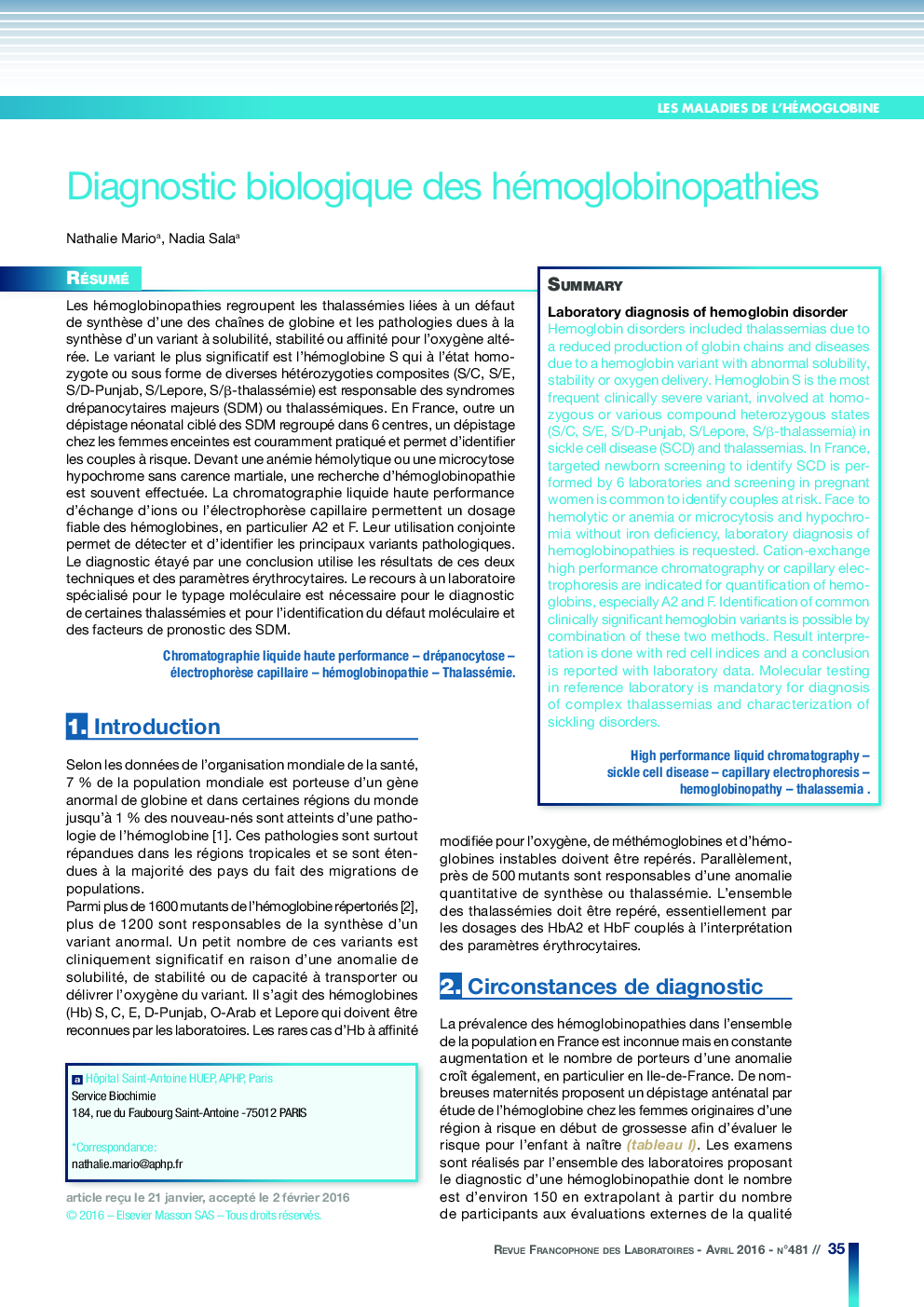| Article ID | Journal | Published Year | Pages | File Type |
|---|---|---|---|---|
| 7646416 | Revue Francophone des Laboratoires | 2016 | 13 Pages |
Abstract
Hemoglobin disorders included thalassemias due to a reduced production of globin chains and diseases due to a hemoglobin variant with abnormal solubility, stability or oxygen delivery. Hemoglobin S is the most frequent clinically severe variant, involved at homozygous or various compound heterozygous states (S/C, S/E, S/D-Punjab, S/Lepore, S/β-thalassemia) in sickle cell disease (SCD) and thalassemias. In France, targeted newborn screening to identify SCD is performed by 6 laboratories and screening in pregnant women is common to identify couples at risk. Face to hemolytic or anemia or microcytosis and hypochromia without iron deficiency, laboratory diagnosis of hemoglobinopathies is requested. Cation-exchange high performance chromatography or capillary electrophoresis are indicated for quantification of hemoglobins, especially A2 and F. Identification of common clinically significant hemoglobin variants is possible by combination of these two methods. Result interpretation is done with red cell indices and a conclusion is reported with laboratory data. Molecular testing in reference laboratory is mandatory for diagnosis of complex thalassemias and characterization of sickling disorders.
Keywords
Related Topics
Physical Sciences and Engineering
Chemistry
Analytical Chemistry
Authors
Nathalie Mario, Nadia Sala,
